Report: The Future of Wine Tourism Webinar
by on 10.06.2020
Anyone working in the tourism industry can attest to the fact that the past weeks have been saturated with uncertainty, anxiety and fear.
According to the United Nations World Tourism Organization (UNWTO), the coronavirus pandemic and subsequent lockdowns have led to an unprecedented 100% of destinations worldwide putting travel restrictions in place. Perfectly planned campaigns have been indefinitely postponed, millions of jobs left in the balance and the hard-earned tourism growth achieved over the past decade wiped out.
Yet, The Future of Wine Tourism webinar that took place from 19 to 21 May sparked a glimmer of hope and reminded attendees that, at a time like this, it is more important to be top of heart than top of mind. Taking care of each other and building relationships of trust between regions, businesses within the eco-system of wine tourism and with our staff and customers should be the focus.
What is wine tourism?
The world is drinking more wine and realising that wine is being produced in beautiful places that offer a lot more than just good wine.
If you think wine tourism is about wine tasting from one cellar to the next, think again. It is about the places, the people, the food, the cultures, the environment and the unique experiences of the wine region.
According to the UNWTO’s definition “wine tourism, a sub-type of gastronomy tourism, refers to tourism whose purpose is visiting vineyards, wineries, tasting, consuming and/or purchasing wine, often at or near the source”.
As per the Georgia Declaration on Wine Tourism issued at the First UNWTO Global Conference on Wine Tourism (September 2016), “Wine tourism, as a crucial component of gastronomy tourism, has evolved into a key element for both emerging and mature tourism destinations in which tourists can experience the culture and lifestyle of destinations while fostering sustainable tourism development.”
This requires us to look at the UNWTOs definition of gastronomy tourism: “Gastronomy Tourism is a type of tourism activity which is characterized by the visitor’s experience linked with food and related products and activities while travelling. Along with authentic, traditional, and/or innovative culinary experiences, gastronomy tourism may also involve other related activities such as visiting the local producers, participating in food festivals and attending cooking classes. (World Tourism Organization (2019), UNWTO Tourism Definitions, UNWTO, Madrid).
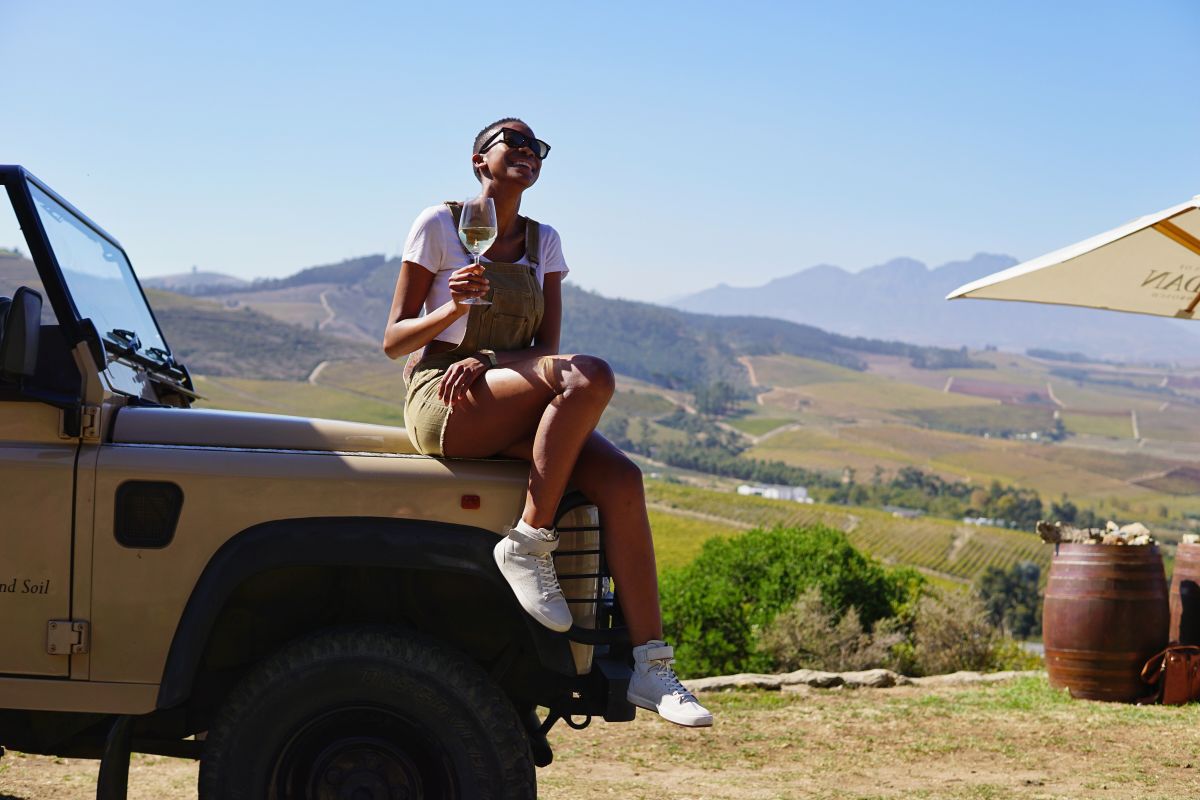
In developing South Africa’s Wine Tourism Strategy for Vinpro in 2016, it was evident that there is no “one size fits all” when it comes to definitions of wine tourism.
For the purpose of clarity, we include an extract from the wine tourism strategy and the wine tourism definition by Professor Robin Back.
Any definition must be carefully crafted to ensure that all appropriate elements for the purpose for which the definition is being used are included, and that it is general enough not to exclude desired components. It must also be remembered that wine, as a product, does not have to be the main reason for engaging in wine tourism for all wine tourists, e.g. wine tourists who do not drink alcohol but who are nonetheless interested in seeing where and learning how wine is made, or those who wish to enjoy the attributes of a wine region without indulging in wine.
In order to include the desired activities, locations, attributes and goals of the proposed wine tourism strategy, the following definition of wine tourism has been proposed and adopted:
Wine tourism is travel to wineries, wine regions or wine festivals and events for the purpose of enjoying food and drink, hospitality, activities, scenery, culture and local South African lifestyles, while fostering sustainable economic development.
This definition encompasses not only visitation to wineries, but also to wine regions in general as well as to wine festivals and events, which may or may not take place within wine regions. The purpose of such travel includes “food and drink” rather than “food and wine,” as other beverages, both alcoholic (e.g. spirits, beer) and non-alcoholic (e.g. juices, coffee) are also produced within wine regions; hospitality is a crucial component of tourism in general and wine and food tourism in particular; there are a multitude of activities available both on South African wine farms and throughout the wine regions; the scenery of South Africa’s wine regions is unsurpassed; and learning about and being immersed in different cultures and lifestyles are a big draw to tourists, especially the younger generational cohorts (the word “lifestyles” is plural, as there is not a single, ubiquitous South African lifestyle). “Fostering sustainable economic development” is included, as this is a crucial component of the wine tourism strategy.
Wine tourism can transform places and in a country like South Africa where economic development is so desperately needed, we have seen it empower small businesses within the value chain of wine tourism.
In South Africa we have twenty-three defined wine routes. Historically most visitors explored the well-known wine routes like Stellenbosch, Constantia and Franschhoek and missed out on the gems and smaller towns that lie beyond the main tourism routes.
In recent years, a greater focus on wine tourism has brought more visitors to these regions. Pioneering people in the wine industry realised that their estates and farms’ true potential for growth lies in wine tourism, giving rise to new developments and a greater investment in experiences beyond wine that entice visitors to stay longer and spend more locally.
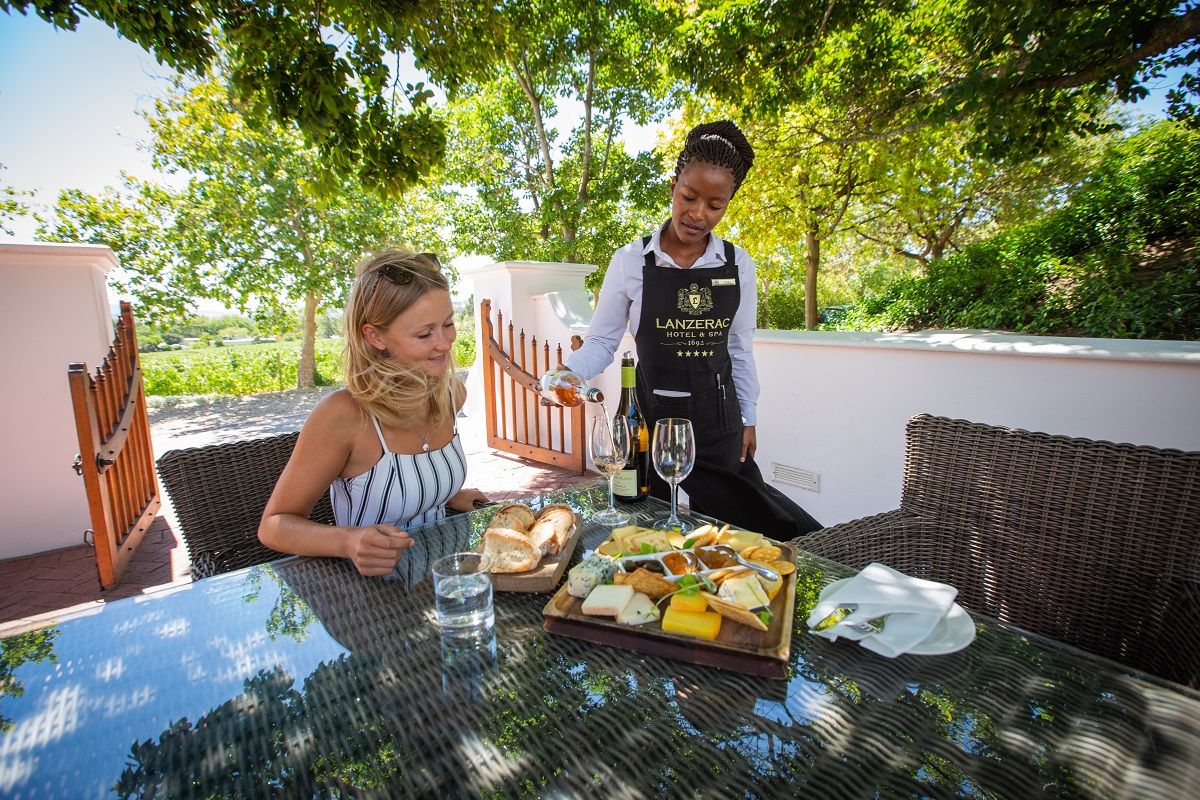
According to UNWTO General-Secretary Zurab Pololikashvili, “Wine tourism creates jobs and entrepreneurship opportunities. It touches all areas of the regional economy through its linkages to handicrafts, gastronomy and agriculture. There lies its great potential to generate development opportunities in remote destinations. The complexity of wine tourism development and the diversity of stakeholders involved requires innovative models of collaboration; we need to break down walls and promote new clusters.”
It is safe to say that whilst wine tourism is the right tourism sector to pursue for wine producing regions and countries from an economic perspective, the real value lies within the value chain of wine tourism with more employment opportunities and direct benefits to small businesses that provide services to wineries.
It is this value chain that is now at risk due to the Covid-19 pandemic and subsequent lockdown. Progress made over the past few years have been lost. If local and domestic tourism cannot be restarted quickly, up to 80% or even more tourism businesses could close down.
The Future of Wine Tourism Webinar: 19 -21 May 2020
Presented by Destinate, the webinar brought 26 panellists and hundreds of attendees from across the globe together to explore and reimagine wine tourism in a post-lockdown world.
With topics ranging from defining our target markets and growing the local market to embracing a whole new virtual world, the aim was to deliver a webinar packed with practical and thoughtful advice, insights and interventions to help prepare the wine and tourism industry for a future where freedom of movement and human interaction will fundamentally change.
Five key findings
What emerged was a rich tapestry of practical advice, encouragement and anticipation for rebuilding wine tourism even better and more resilient in the future.
While we will unpack the main points from each session in more detail below, it’s worth mentioning that there were five key findings that emerged out of the three days:
1. Health and safety are set to be our priority for the foreseeable future.
2. Collaboration is key to moving forward as an industry.
3. It’s time to woo our domestic markets.
4. We need to approach digital solutions with less trepidation and more creativity, but remember that technology is simply an enabler and needs a human story with engagement to be impactful.
5. Our spaces will be our greatest assets post-lockdown – we need to use them well.
You can read more about these five takeaways on the Destinate website.
We have outlined further takeouts from the webinar sessions below and included a link to the sessions that you can listen to in full at your convenience. We want to express our sincere gratitude to all the panellists who participated in the webinar. A special note of thanks to Robin Shaw of Wine Tourism Australia for her contribution to the report.
Summary of sessions
Session 1: Preparing for a new era in wine tourism
Panellists:
- Sisa Ntshona, Chief Executive Officer, SA Tourism
- Margie Whitehouse, Chief Tourism Officer, Wesgro
- Marisah Niewoudt, Wine Tourism Manager, Vinpro
- Charles Back, Fairview
- Ian Haggie, Explore Sideways
The most important thing any wine tourism business can do to prepare themselves for the gradual return of visitors post-lockdown, is to show their commitment to maintaining strict health and safety protocols to protect both their guests and staff members.
As Haggie pointed out, visits will be based on travellers’ trust and confidence in the destinations’ response to the minimising exposure to the virus.
Apart from setting the minds of potential visitors at ease, Ntshona added, showing a commitment to health and safety could also lead to the government accelerating the lifting of restrictions on tourism activities.
Ntshona also stressed the work that the sector needs to do in order to evoke trust to travel again. “We need to instil trust not only in the travellers but also in Government, they need to trust us as a sector to do what is best for the country; balancing jobs and balancing the livelihoods of the people. Some work has to be done, in order to instil this confidence,” he said.
While timelines for the reopening of the industry remain murky, the one thing we know for sure is that the domestic market will lead recovery. This is a great opportunity for wine businesses that had relied heavily on international visitors to reposition themselves to be more attractive to local clients.
One of the ways in which a number of wineries have been doing this is through capitalising on their wine clubs and mailing lists.
“The beauty of wine clubs and domestic traveller recovery, is that we know these people. We have relationships with them,” said Niewoudt. “Somewhere in your database, you have their orders and their wine preferences. It’s like picking up a conversation with an old friend.”
Niewoudt reminded us that traditionally, across South Africa’s wine routes, 70% of our existing visitors are domestic. The wine tourism sector has actually served the domestic market, and domestic day-trippers as our bread and butter, well for some time. The shift only moves to 50% international for the mature routes like Stellenbosch and Franschhoek. This is evidence that there is scope to grow our domestic market even further to help sustain wine tourism in South Africa.
Now is not the time to be silent. We need to communicate, build our online communities and make sure that we read the room.
From Back’s point of view, it is absolutely essential that wineries and wine tourism businesses move away from the notion that wine tastings and cheese platters are enough to ensure return visitors. He emphasised the need to diversify – give visitors a variety of options and bang for their hard-earned or -saved lockdown buck.
Watch the full discussion here: https://youtu.be/54vUiwZqpoE

Session 2: Our target markets and wine tourism experiences
Panellists:
- Thapelo Mokoena, Nero
- Cha McCoy, Sommelier, New York
- Hein Koegelenberg, La Motte
- Prof. Robin Back (Rosen College of Hospitality Management)
- Thobi Rose (Curate-itZA)
As was highlighted in Session One, the very first people who will be visiting wineries post-lockdown will be locals who live within close proximity of wineries, not the connoisseur from abroad.
Appealing to the domestic market is going to be essential to the survival of many wine tourism businesses and regions at large. Of course, in a country as diverse as South Africa, this may seem like an almost impossible task. However, going forward diversity is the very key with which a new era in wine tourism will be unlocked.
Mokoena, McCoy and Rose emphasised the need for wine to be made more accessible and less intimidating through simply telling its story in more languages and authentic voices and getting more human when it comes to wine.
With 11 official languages and countless dialects, there is so much potential for wine to move beyond its traditional English and Afrikaans heritage and the marketing campaigns that look very similar to those anywhere else in the world.
Rose also emphasised the fact that it’s so important that it isn’t only experts who talk about wine, but also ordinary people (the mother who’s had a long day, the person who’s just finished a gruelling hike, someone cooking a traditional African meal for their family) as well as those who work so hard behind the scenes (farm workers, chefs, winemakers).
However, in order to be able to tell their story with conviction, the wine business has to have a good understanding of who they are and, more importantly, why they do what they do.
As Koegelenberg pointed out: you have to be known for something, otherwise people won’t remember you. “You can’t be everything for everybody,” he said.
If we focus on the months immediately post-lockdown, he also predicts that wineries should prepare themselves to welcome more small intimate groups of travellers – many who will want to be reconnecting with one another after having spent a long time apart. With over-60s being at higher risk of contracting COVID-19, the average age of our visitors may also drop significantly. Are we prepared for this?
Young tech-savvy people may be more likely to research places they’d like to visit online first. Therefore, it is important to have websites and social media channels that capture their attention and stand amongst the digital clutter.
But, whilst we can expect a higher number of younger visitors, it doesn’t mean older travellers won’t venture out. In fact, we can expect a high number of local and domestic travellers who want to experience a more exclusive and luxurious experience. Many South Africans with the means to travel will stay home this year and perhaps even next year rather than travel to Europe or elsewhere. We need to make sure we are offering and packaging the kind of experiences that will appeal to travellers with higher disposable incomes who are interested in the finer things of life.
In line with this, online booking platforms are going to become absolutely essential, Back pointed out. Considering the restrictions social distancing will put on restaurants and tasting rooms, people will want some kind of assurance that wineries will be able to accommodate them for a visit. The quickest and easiest way to do this is by booking online.
Advance online bookings also have other advantages, enabling wineries to plan their daily resourcing according to the number of guest bookings, securing payment upfront and capturing data about each guest.
As we wait for visitors to return, wineries should ensure that websites are up to date and provide tacit information about how the business is protecting the health of its staff and guests. Additionally, it would be wise for wine businesses to use this time to invest in staff training, especially in terms of sanitising protocols, health and safety and engaging with visitors in a new way.
Post-lockdown, guests will expect excellent service to include close attention to all aspects of hygiene.
Watch the full discussion here: https://youtu.be/9S30nTeDX5I
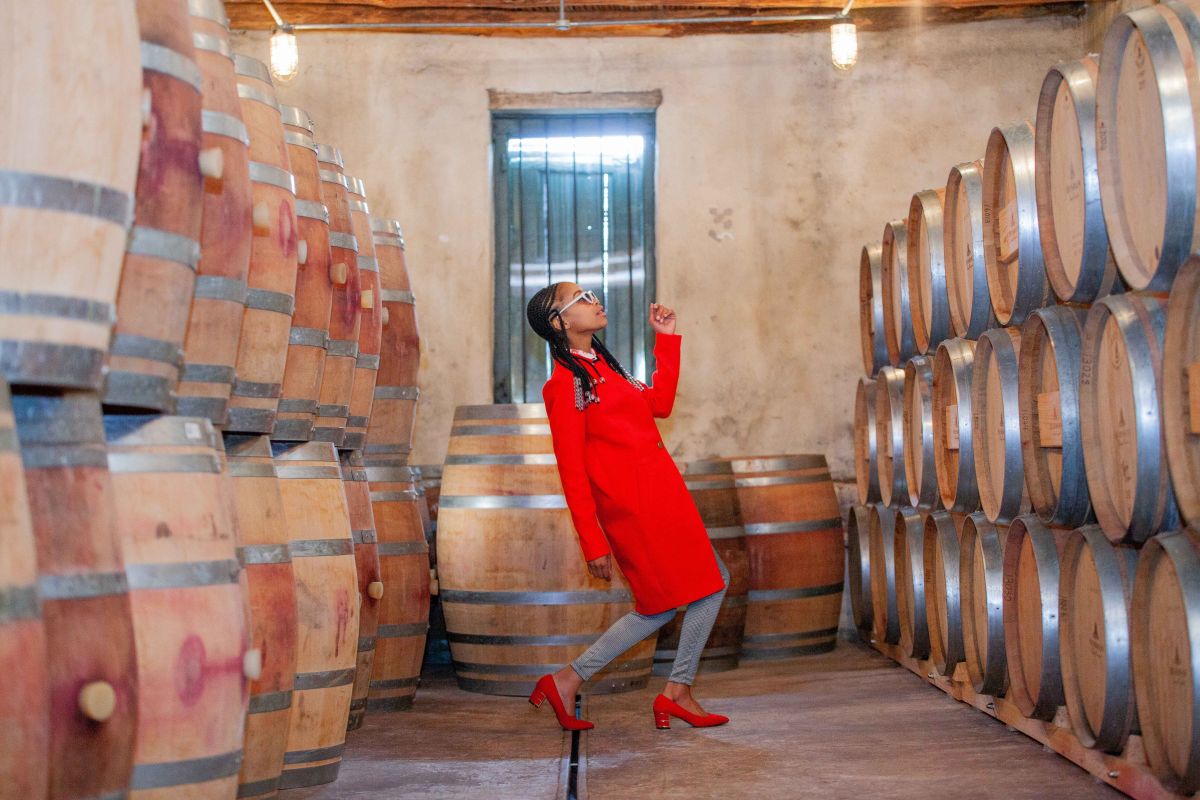
Session 3: A global perspective
Panellists:
- Sandra Carvao, Chief: Market Intelligence and Competitiveness at World Tourism Organization (UNWTO)
- Paul Mabray, Wine Revolutionary
- Robert Joseph, The Wine Thinker
When talking about wine tourism, Joseph pointed out that a good place to start would be defining it.
“There are a lot of people who want to travel and do some wine tasting while they’re at it,” he said. “It’s a form of entertainment. I could go to the beach; I could go to a museum or I could go to a winery.”
Taking this way of thinking into consideration, it’s important for wineries to look at ways to offer guests a wider range of activities and experiences than only wine tasting.
“Once I’ve seen barrels and I’ve seen vineyards and stood around in a cellar, I’ve seen everything,” Joseph added. “So, the next winery I visit should offer something different – something for the kids to do, an art exhibition or an interesting food experience. Differentiate and work hard on packaging experiences that make people want to come to you.”
This approach is going to be increasingly important post-lockdown, especially in attracting the domestic market. For a while, their travel options will be limited, providing wine regions with a unique opportunity to grab their attention by offering a wide range of experiences within a relatively small radius.
While we wait for our domestic market to lead the gradual opening up of tourism, however, it’s important to invest in digital transformation, Mabray pointed out. Both Australia and the US have seen a huge increase in online wine sales during their respective lockdown periods. Although South African wine businesses have been hamstrung by the alcohol ban, we can expect the same scenario to play itself out over the next few months, and become an important sales channel over time.
Now that wine sales have opened up again in South Africa, consumers will be spoiled for choice in terms of where they buy their wine. If wineries want to sell directly to customers, they will have to think both creatively and collaboratively.
Due to the closure of restaurants, people are looking for ways to treat themselves at home through food deliveries. Wineries can tap into this trend by teaming up with other local producers to offer a package of delicious, locally-produced items like honey, cheese and bread, along with their wines.
With this increase in digital connection, Carvao added that it’s essential for wineries to make use of this opportunity to capture data about their customers. This will be valuable information to work with in future marketing campaigns and also faciliate a more personal approach in connecting with customers.
Watch the full discussion here: https://youtu.be/4tAlsMUpTwU
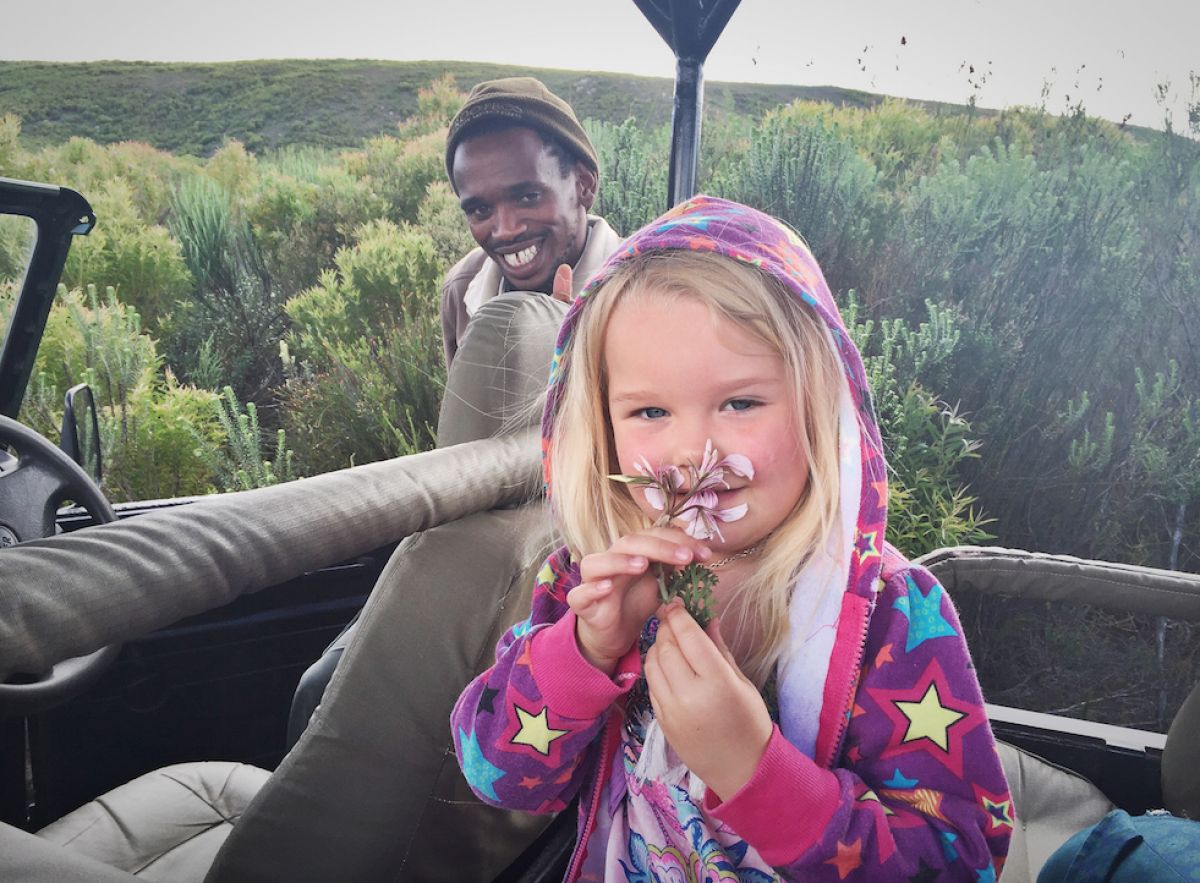
Session 4: Going virtual
Panellists:
- Andre Ribeirinho, Adegga/Portugal Wine Week
- Stanley Edwards, Platypus Digital
- Amber LeBeau, Spitbucket.net/Virtual Wine Events
- Margi Biggs, Convenor of the Wine & Food Tourism Conference & Awards
Even though digital transformation has been on the cards for at least a decade now, many wine tourism businesses have put off leaning into this new reality.
In many ways, the global pandemic and subsequent lockdowns have accelerated the need for this shift to take place.
While it’s a scary change to make for many, our panellists argued that it really comes down to changing the way we think about the digital realm, especially something as futuristic-sounding as ‘virtual reality’.
Edwards pointed out that virtual reality goes beyond a pair of bulky goggles and that technology is meaningless if you can’t bring it to life with good content and a good story.
“It’s about telling stories, about showing people who you are before they arrive,” he said. “Including something like a virtual tour on your site allows people to dream and to plan. It also gives them more confidence in their booking.”
During lockdown, many wineries have also opted to present virtual wine tastings. While this is a great idea in principle, the brutal truth is that many of these events simply aren’t engaging enough to keep audiences coming back for more.
LeBeau, who runs a website featuring digital wine events, says she has found the virtual tastings that really work are those built around a specific theme – perhaps a certain cultivar, region or a blind tasting. Furthermore, the platform that seems to be the most popular for these types of events, is IGTV, although webinars are gaining popularity as more consumers embrace digital as the new normal.
“A good tool for wineries to look at is the new Trending Events section that we've added to the site,” said LeBeau. This is organic feedback that updates throughout the day, listing the events that users are clicking on, bookmarking, adding to their personal calendar and sharing on social media. Here wineries can see first hand what kind of events capture users' interest.
Brands should think of these online wine events more as virtual experiences rather than virtual tastings. The goal should be to give the consumer an entertaining and engaging experience that shares the stories and personalities of the brand. Do that and the tasting part (and sales) will come.
One way for wine businesses to rethink the way they approach presenting themselves digitally, is to move away from the notion that virtual experiences are substitutes for real life.
“In fact, what makes digital so exciting is the fact that you can do something that wouldn’t be possible in real life!” Ribeirinho said. “For example, for the first time ever, I can visit all the wineries in a certain region in one weekend. This simply wasn’t possible before.”
Virtual events also offer businesses the opportunity to bring a wider variety of people together, to make their offering more inclusive.
As LeBeau pointed out, this is a great time for businesses to introduce themselves to a wider audience and plant seeds for future travel to source.
Biggs underpinned this with her concluding remark: “Our visitors are going to come back one day, so we just need to keep them engaged and stay true to who we are until they do.”
Even when they do, virtual events are likely to remain a permanent fixture in the event calendar for many wineries.
Watch the full discussion here: https://youtu.be/WXFnPbd1VcY

Session 5: Operational readiness
Panellists:
- Carolyn Martin, Creation Wines
- Ntsiki Biyela, Aslina Wines
- Kristen Duff, Content Marketing Manager, Publik & CyberCellar / Blogger at Glou Glou
- Robin Shaw, Wine Tourism Australia
Picking up where the previous panel left off, session five focused on how wine businesses can ensure that they are ready for the long-awaited return of visitors.
Martin kicked the discussion off with an overview of the practical ways in which Creation Wines will be optimising health and safety. Here’s a quick rundown:
- Staff members are to be equipped with masks and sanitisers.
- Every day, it will be one person’s job to ensure that all areas are sanitised and cleaned at regular intervals.
- Staff will constantly be reminded of the procedures in place.
- Health and safety training will be ongoing.
- Upon arrival, guests will be greeted by a staff member at the entrance, who will then be assigned to them and accompany them on their various activities.
- Staff will also receive intensive training to perform a variety of duties with excellence.
- All visitors will have to make reservations.
- More outdoor spaces and alternative venues on the farm will be utilised for private tastings and new wine tourism experiences.
Although having these protocols in place will offer guests peace of mind, Duff highlighted the fact that they will still be craving a beautiful experience, not only a safe one.
“Remember the reason why people come to the winelands – the views, the experience, combined with beautiful wines,” she said.
Because of this, wineries should take care not to make their spaces seem overly sanitised or sterile. Even though safety will be paramount, people won’t want to feel like they are visiting hospitals without soul and warmth. As always, brands should pay careful attention to the small details that make up a beautiful and memorable visitor experience and remember that people add the magic.
In the meantime, while we wait for our visitors to return, communicating with them is absolutely essential. Apart from sharing the ways in which your business is putting health and safety protocols in place, it’s also necessary to show you care about and need their support. It’s a hard thing for many brands to do, but embracing vulnerability at times like these goes a long way to making you more relatable. Don’t be scared to offer people a little peek behind the scenes. Show them how you are getting ready for their return and get them excited about what to expect.
In this regard, Shaw emphasised a point that had emerged in previous panel discussions about harnessing the humble mailing list as the first port of call.
“[In Australia], we’ve seen an incredible increase in online alcohol sales in general and wine in particular. This has been especially true for wineries who have well maintained mailing lists or existing wine clubs and have worked hard at maintaining their contact and relationship with their customers,” she said.
For those businesses that might not have mailing lists or wine clubs in place, but who want to tap into online sales, Duff suggests investigating existing wine sales platforms to get more brand exposure. In South Africa, Publik and Cybercellar would be great places to start.
In line with many of the previous discussions, session 5 also circled back to an increase in support for local brands among consumers.
Shaw pointed out that in Australia, consumers are making an effort to support local wineries who have faced a tough few months with drought, bushfires, and now lockdown.
“There’s a sense of being humbled by the locals who are coming out to show their support. So, many wineries have started making little care/picnic packages for the locals to pick up.” She also emphasised the need to revisit traditional wine tasting experiences and make provision for more sit-down options for smaller groups.
Along with this, consumers are also set to become increasingly passionate about supporting ethical and sustainable business. It’s important for wineries to clearly communicate the ways in which they are making an effort to tread lightly and work for the wellbeing of their communities and staff working in all the different areas of the winery.
Watch the full discussion here: https://youtu.be/6azFOcml9Us
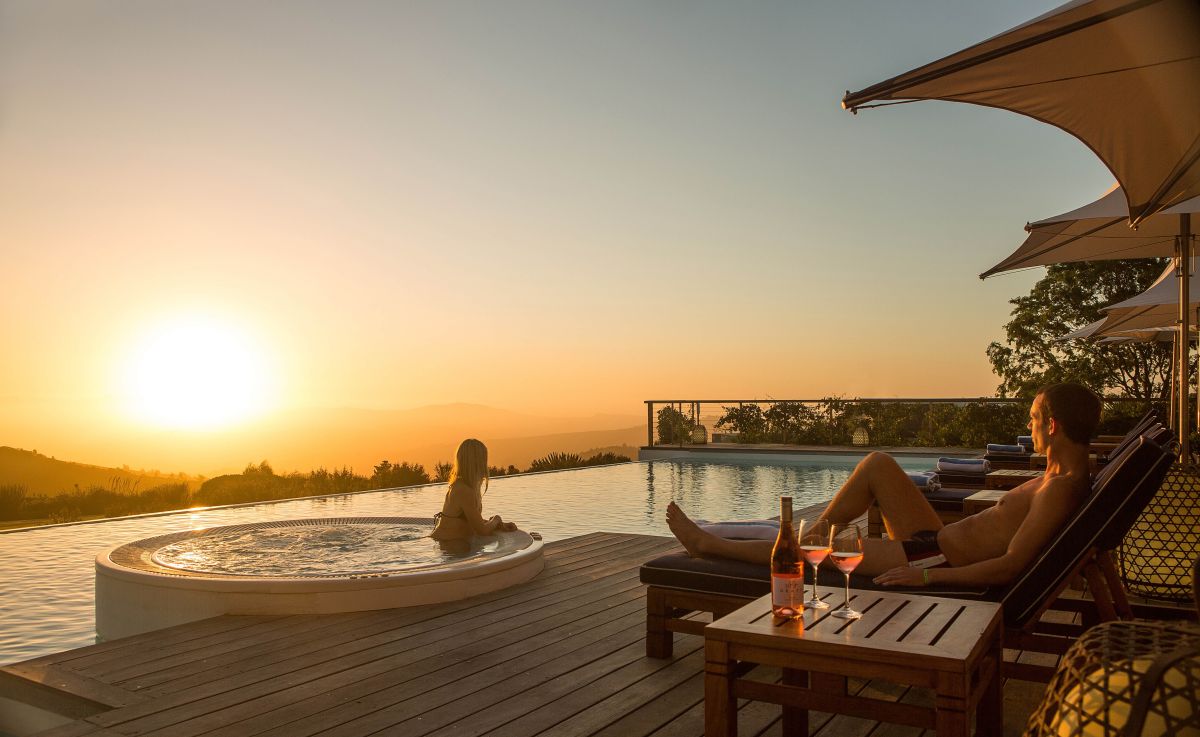
Session 6: Sales and marketing
Panellists:
- Mashudu Modau, Founder Lutcha & Compass Africa
- Kash Bhattacharya, Budget Traveller
- Felicity Carter, Editor in Chief, Meininger’s Wine Business International
- Malu Lambert, Wine Writer
- Pamela McOnie, Cape Fusion Tours
- Marybeth Bentwood, Wine Marketer, Chile
One of the golden threads running through all of the panel discussions, was the fact that we should place a higher value on our domestic market, especially those people living within close proximity to wineries. Also, to create a sense of community as we do so.
Carter pointed out that wine businesses would do well in personalising their communication with the local market, even to the point of sending hand-written notes inviting loyal clients to visit or as a heartfelt “thank you” accompanying their online order. It would also be wise to create a tiered offering with a variety of experiences at a variety of price points to accommodate as large a segment of the domestic market as possible. People will want a far greater sense of flexibility and experiences tailormade to suit their needs.
In a similar vein, Lambert predicted that as we move into a hugely uncertain future, ‘luxury’ and ‘glamour’ are set to become quite distasteful to clients and that brands need to craft authentic, stories in the wake of what will be Coronavirus news fatigue. More than ever people are looking for trust and transparency – real stories with real people. We’re going to want to feel connected to something.
As an award-winning wine writer, she also emphasised the fact that wine tourism businesses have got to focus on telling their stories, introducing their people, rather than merely sharing information. And, if they aren’t sure what their story really is, this quiet time could be useful to ask themselves a few important questions:
- Who are we?
- What do we want to say?
- What do we want to achieve? (Is it sales, building a community or what?)
- How do we do it? (You don’t have to be everywhere!)
Of course, digital platforms owned by the brand are the ideal place to start and continue sharing their story. Importantly, this also gives them the opportunity to reach a much wider audience than they may have been able to before.
An important trend to emerge from lockdown is that people are throwing themselves into niche interests, from baking to embroidery. This is a great opportunity to use this creative zeitgeist and bring your brand into the future. Collaboration with like-minded brands and people is where it’s at: join forces and tell stories together.
When it comes to delivering your message, have a 360 approach. Your database is more powerful than ever, so collect those emails and engage with the people who are already buying your product. Offer them exclusive deals and tailor-made products or experiences. Let them be first in-line and what ever you do, nurture those relationships. An investment in carefully curated and thoughtful, personalized experiences that have a real local and authentic flavour to it will pay off. Now is the time to rise on social media and broadcast your individualism, but stay grounded and true to who you are, crafting your message to achieve your desired outcome.
In his work as a content and ecommerce specialist, helping brands and individuals communicate and transact more effectively online, Modau said that he definitely sees a gap in the market for accessible, enjoyable and educational wine content.
Globally, podcasts continue gaining popularity and also tend to create extraordinary communities and conversations around them.
“Podcasting is a phenomenal media,” he said. “Currently, there is not enough wine and wine tourism podcasting happening in South Africa. This is an opportunity to build a really good holistic learning experience with an audience that wants to learn more.”
While building a community of trust and inclusivity in the local market is important, it’s also essential to investigate a little deeper at the makeup of this market. In doing this, two specific micro-markets may emerge: women and intimate family groups.
In the case of women, they tend to be the purchasers for the household and most probably the ones buying the wine along with the other groceries. Bentwood highlighted the importance of marketing to women beyond sending them recipes to cook with their wine.
In terms of families, wineries should be prepared to receive multigenerational family groups post-lockdown as people will want to reconnect with loved ones in beautiful settings.
One of the ways to make sure you can accommodate them appropriately, is to offer tasting experiences, picnic lunches, etc., in previously unused spaces on the property.
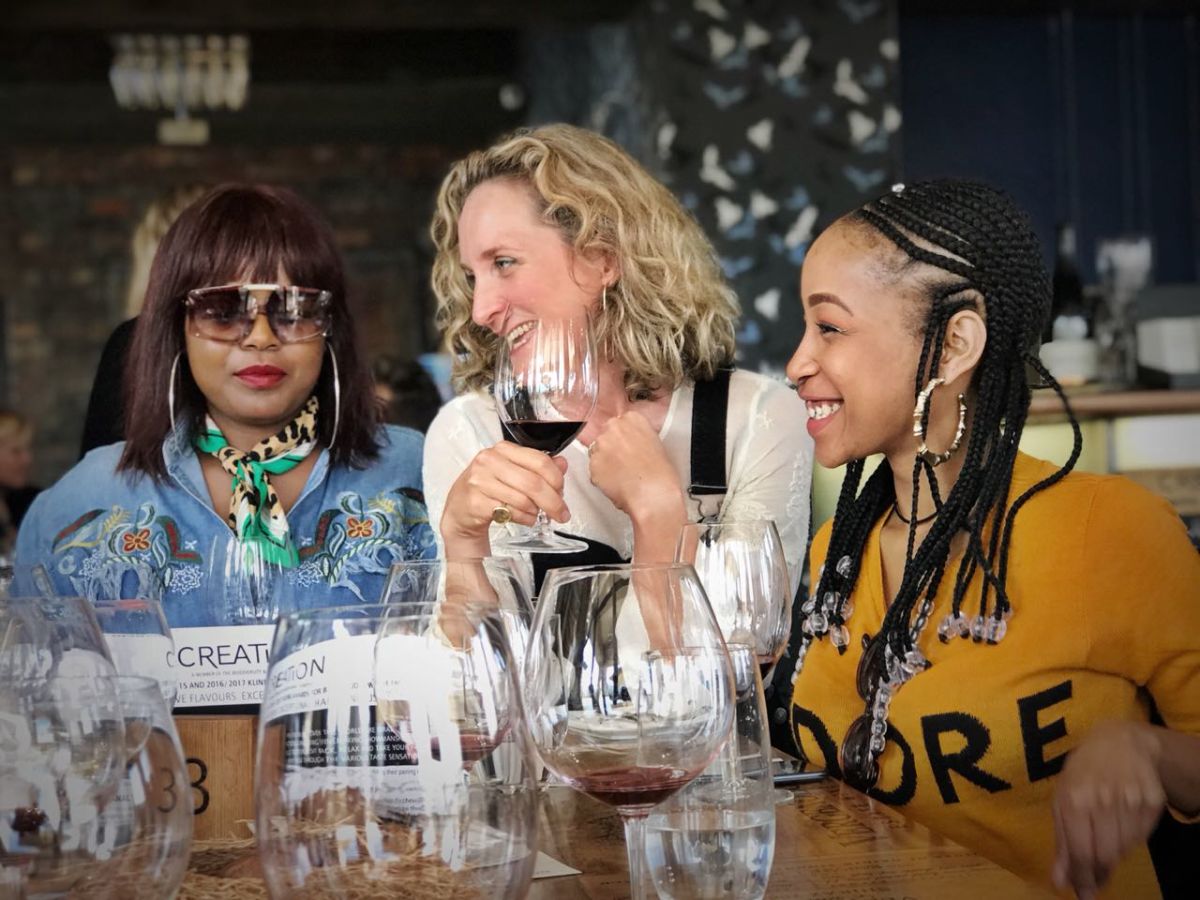
We were reminded not to forget children and brands who can put together family-friendly experiences and environments will do well post lockdown.
Again, it is important to remember that women are a key target market as they are not only the buyers and drinkers of wine, more often than not, they also plan the family outings, offering an ideal opportunity to deliver a wine and travel message simultaneously.
There’s no doubt that in a post-lockdown world, space will be the biggest asset of any wine tourism business. So, start looking at ways to maximise the space you have available - both indoors and outdoors. Social distancing will be around for the foreseeable future, which means that expanding guest experiences to further reaches of a winery’s property and adding more outdoor based experiences will be crucial.
South Africa is blessed with an incredible natural beauty and wine regions have the space to offer visitors experiences that is not only safe, but enjoyable. Exactly what we have all been craving during lockdown.
Watch the full discussion here: https://youtu.be/eh433LBpNmE
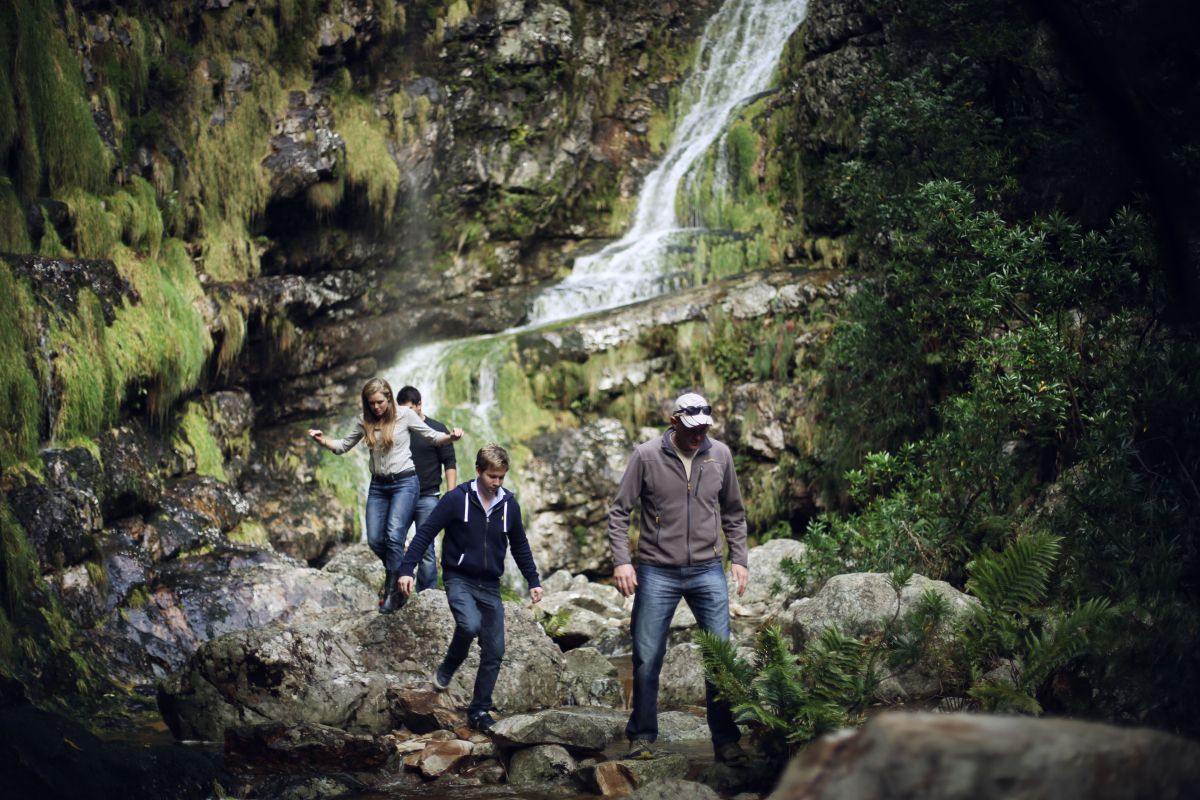
Conclusion
The beauty of wine tourism is that it provides a key to unlocking the warm heart of regions, their cultures, history, food, attractions and most importantly, their people. It is always the people who make places and brands memorable and when your brand is lined up on a shelf among many other wine bottles, your label needs to stand out because of the indelible memory it evokes rather than simply the graphics.
Now is the time to reach consumers at home, to touch their hearts and evoke a desire to visit by putting the heart back into storytelling and communication. Building your community, equipping your teams and preparing to deliver safe, but really meaningful and enjoyable experiences post lockdown should be the priority, even more so than having the latest technology in place.
The need for greater collaboration across sectors within the value chain of wine tourism, between private and public sector and cross-regionally was one of the most important take-outs from the webinar. We need to step out of our traditional networking circles and build closer relationships and partnerships between wineries and tour operators, restaurants and experience operators, creating new products and experiences that appeal – first and foremost - to our domestic markets.
Ask yourself, why would anyone take the risk of visiting you just for an ordinary wine tasting? We need to put the enchantment back into wine tourism. As Pamela McOnie said: “Over the years we lost the magic of relationship and wine tourism became impersonal commercial experiences.” We need to work together as communities of like-minded people and brands to put together wine tourism experiences that are all about meaningful interaction, true connection and fun, albeit with social distancing and safety regulations firmly in place.
Working together in dynamic networks rather than in silos, we become an extension of each other’s marketing teams, telling each other’s stories and providing visitors with inclusive experiences that give them what they are yearning for.
The future of wine tourism, although uncertain, holds great opportunity if you are brave enough to step into the unknown and work together as an industry, but also with other sectors in tourism and regions locally and internationally. Collaboration, innovation, embracing what makes your brand unique along with a real sense of humanity will stand us in good stead as we navigate our way forward.

Resources:
https://www.visitwinelands.co.za/
https://toolkit.vinpro.co.za/
https://nationalwinecentre.com.au/whats-on/events/2020/4/the-nwc-at-home/
www.virtualwineevents.com
www.wine360.world
https://compass.africa/
www.wineandfood.co.za
https://winetourismaustralia.com/uncharted-waters-keeping-your-cellar-door-afloat-in-the-covid-19-storm/
www.specializedtoursandevents.co.za